SCRR at Williams, AZ 9/21 - 9/25
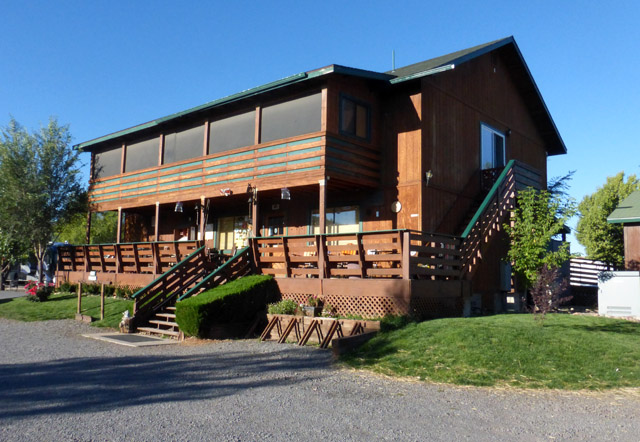
This is the main office and owner's residence at the Railside RV Ranch. The clubroom is off to
the right, mostly cut off in this picture.
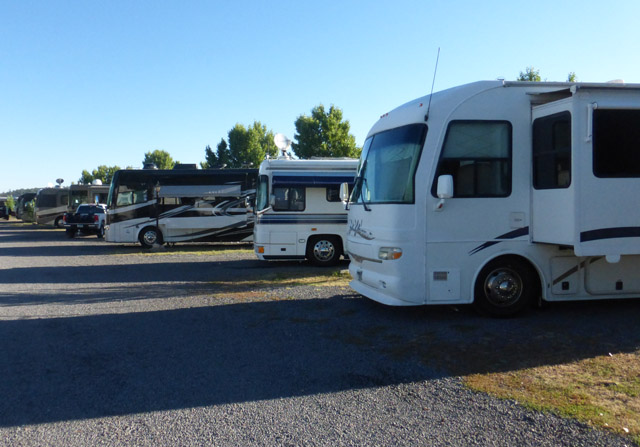
Our 8 rigs were parked in a line just behind the office.
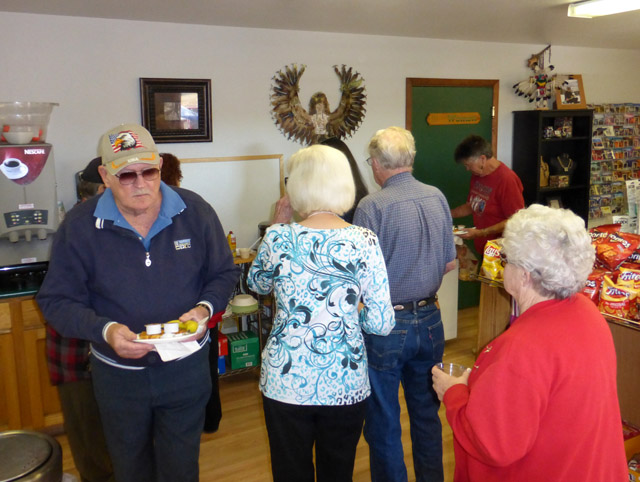
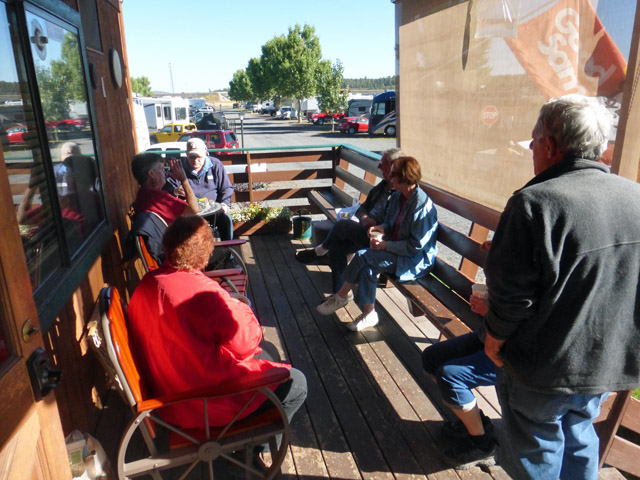
The campground supplied a continental breakfast each day consisting of waffles, cereal, juice, eggs, and fruit. It was very good!
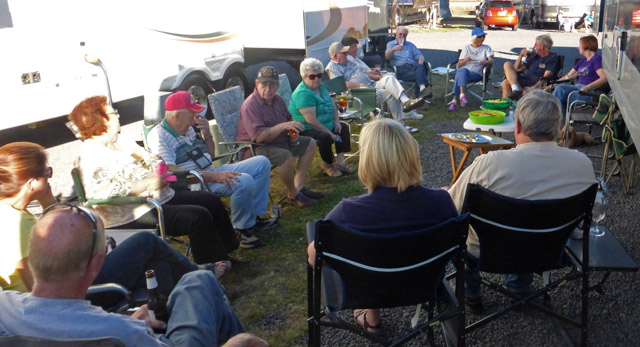
Happy hour was a time to sit around and catch up with what has been happening to
the others since we last saw them.
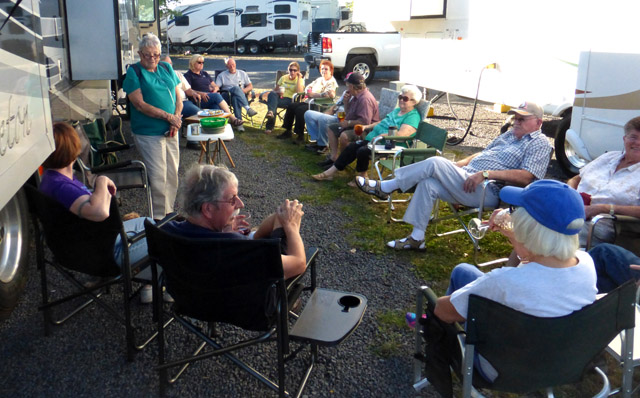
It was also a good time to get to know the newer members and guests.
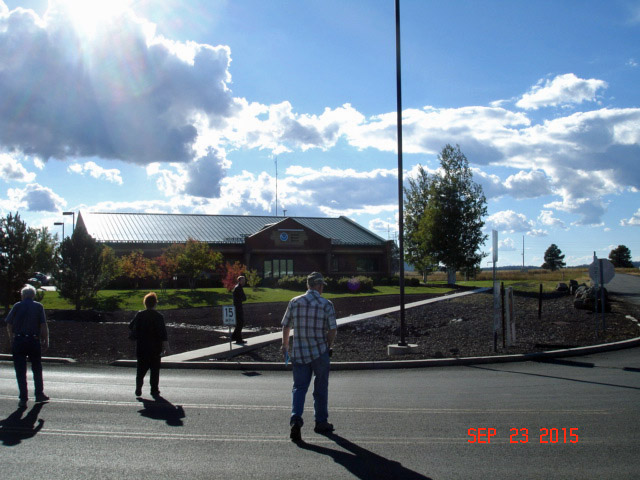
Wednesday we went to the US Weather Bureau facility in Bellmont for a tour.
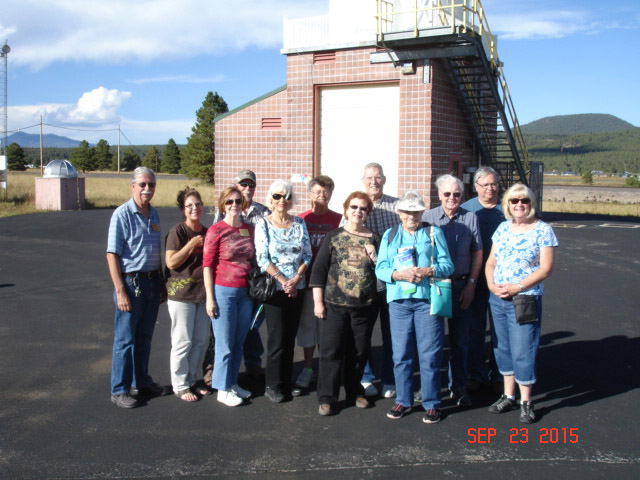
All of us who went to the Weather Bureau pose for a picture. From left to right are Norm, Kate, Mary, Mike,
Marilyn, Carol, Rosemarie, Dick, Shirley, Bill, Bob, and Cathy. Missing is Marv.
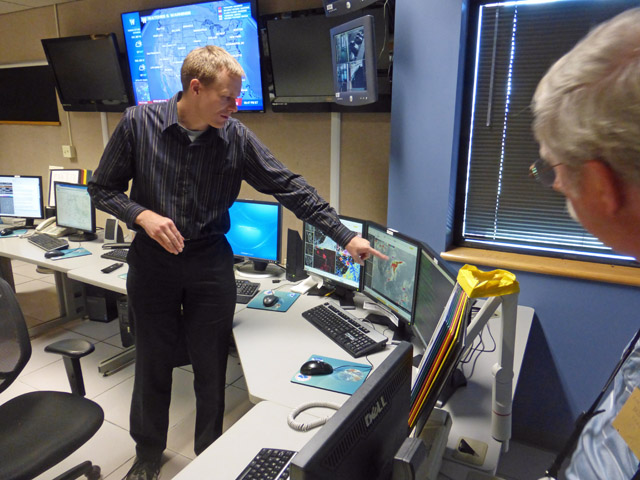
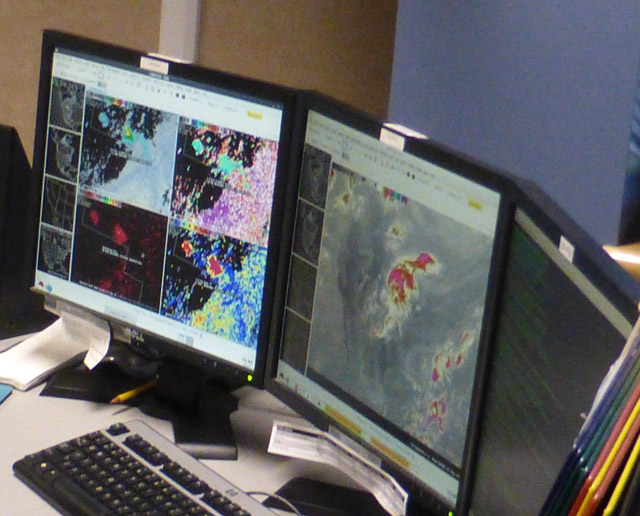
Our host is pointing out some details on the satellite map. On the right are screens showing variations of the radar maps on the left, and the satellite
map on the right. The various views of the radar display are actually different types of radar. By using them together, the forecasters can tell much
more than with just one view.
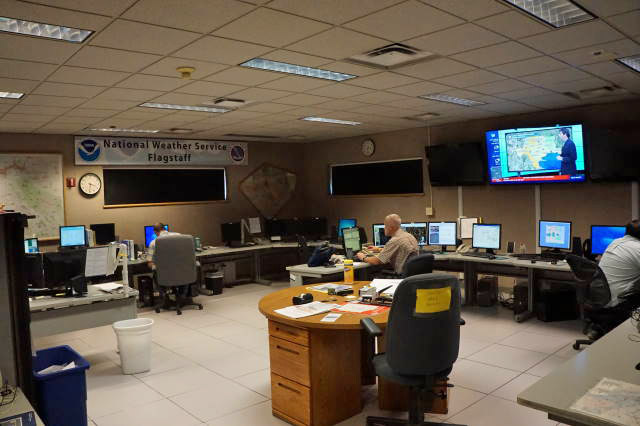
Typically, there are 2 forecasters on duty at any given time. This varies according to an urgency scale they
have established. During times of very active weather, the staff is larger than during times of stability. The
forecasters have many duties they can move between.
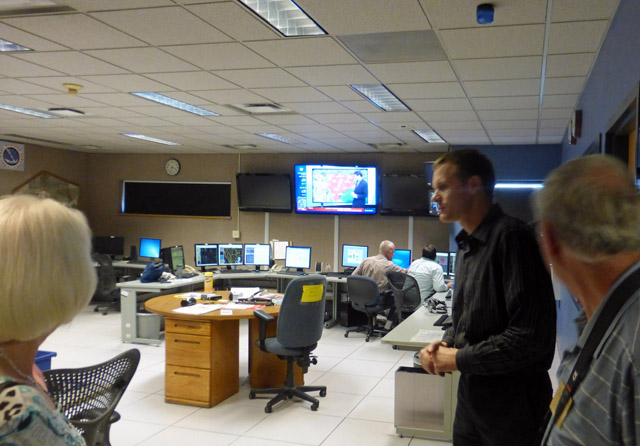
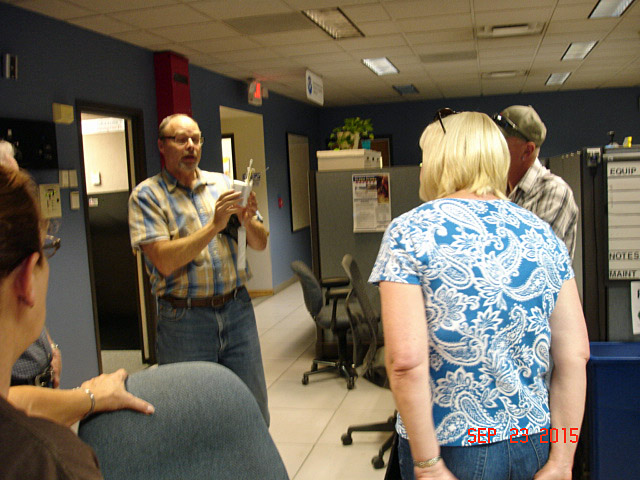
We were very fortunate to have such good explanations of the reporting and forecasting efforts.
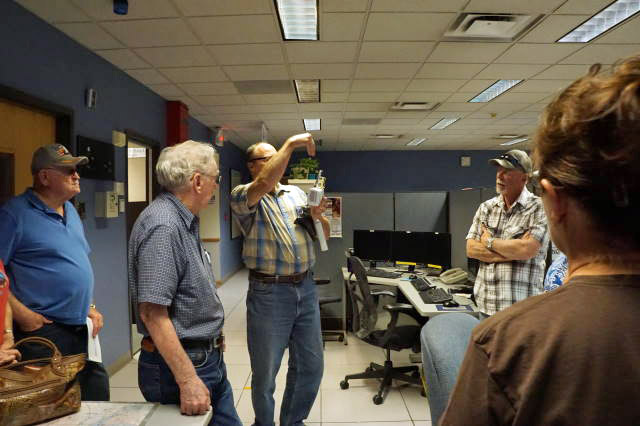
Here the forecaster responsible for launching the weather balloons shows us a radiosonde and explains
what it does and why.
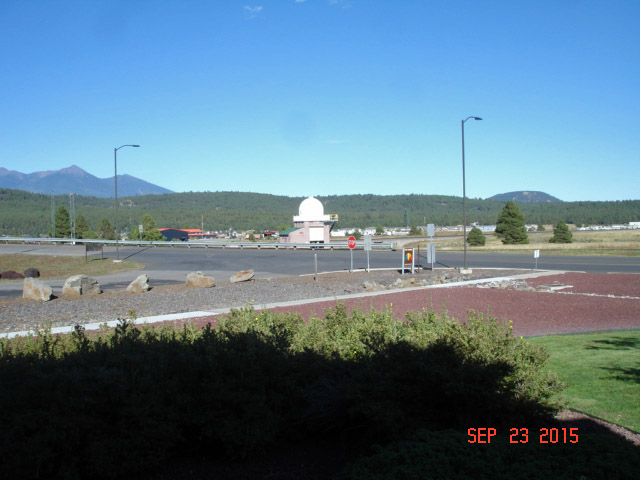
After touring the office, we were taken out to the balloon launch facility. It is a separate area across the street
from the office. There is a small building with a radome on the roof. The radome houses the antennas which
track the weather balloon and receive all the data it sends out.
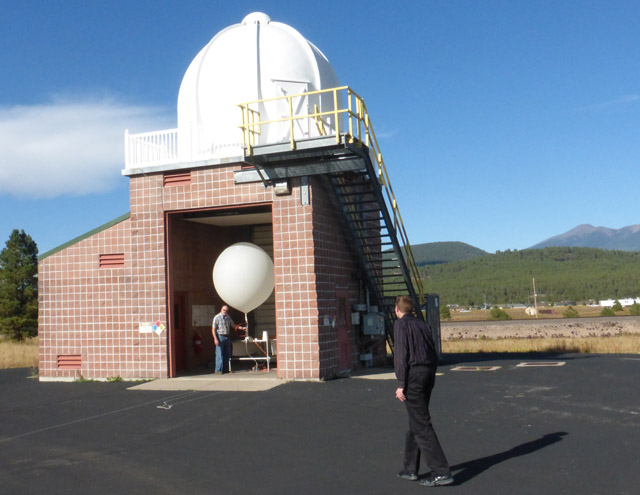
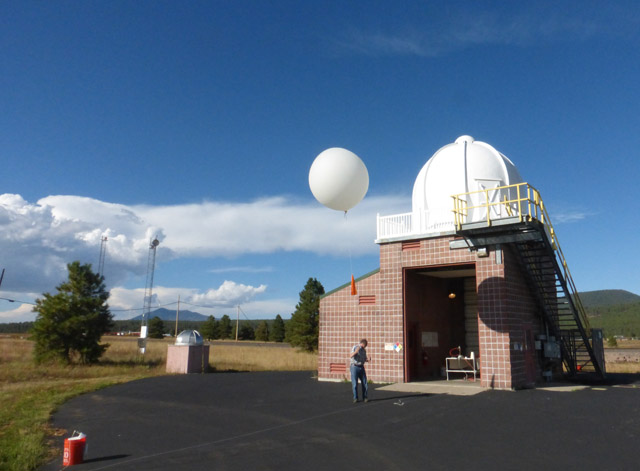
The forecaster inflates the balloon with hydrogen inside the building. If the winds are strong, he can partially close the garage type door. Once the balloon develops the
correct amount of lift, the filling valve shuts off automatically. He then attaches the long line between the balloon and the radiosonde. The orange item on the line is a
parachute. This is used to slow the descent to prevent injury or damage to people or property on the ground as the rig descends at the end of the flight.
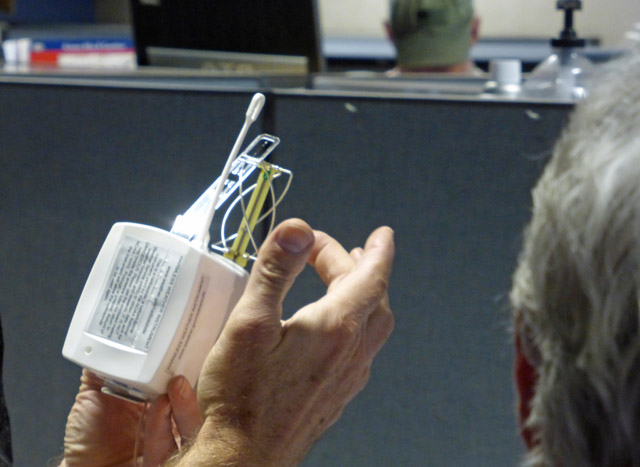
This is the radiosonde. It is a small package of instruments and radios. It senses temperature, pressure,
humidity, etc. and includes a GPS to continuously send back its exact location.
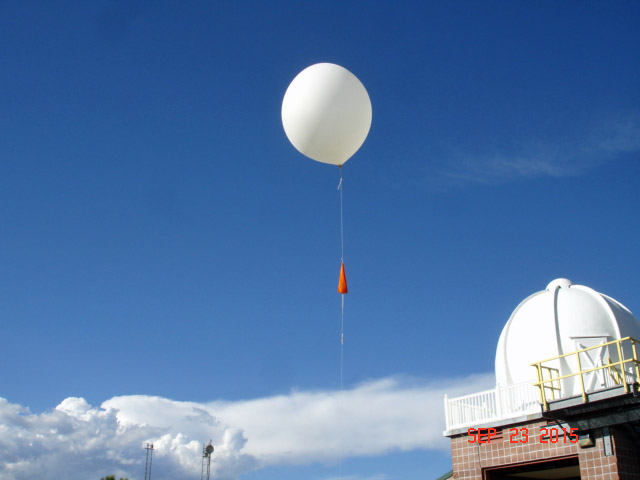
Here, our balloon is in the process of being released. He slowly releases line until
the radiosonde at the other end of the line is lifted, he then releases it. It will
usually obtain a height of 12 to 15 miles, collecting data all the way, until the balloon
bursts. The balloon starts out at about 5 feet in diameter, but as it rises and the pressure
around it decreases, it grows to about 20 feet in diameter, and eventually bursts. At
this point the radiosonde stops transmitting and the parachute keeps if from falling too fast..
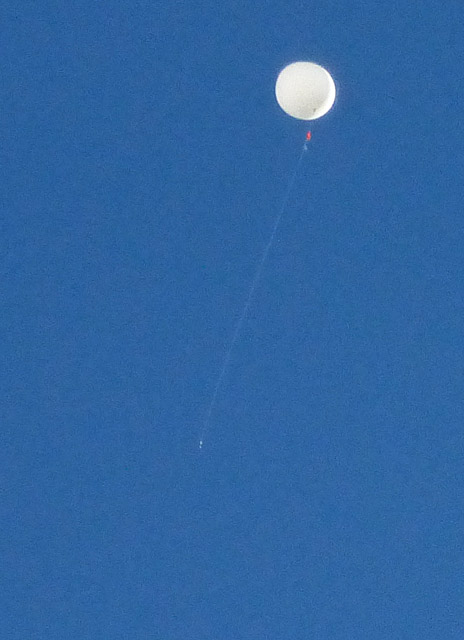
Here we see the balloon in full flight with the radiosonde hanging far, far below.
They use such a long line to prevent the effects of the sun heating up the balloon
from affecting the readings.
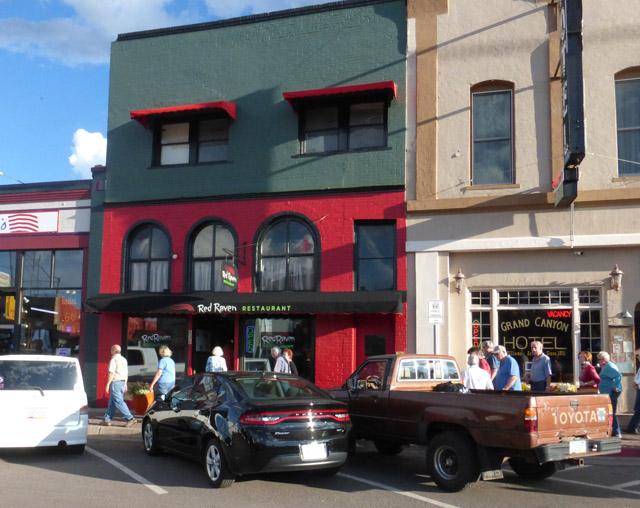
Wednesday night, the park shuttle took us to the Red Raven restaurant for dinner. It was sure nice to
not have to worry about car-pooling, driving, and parking.
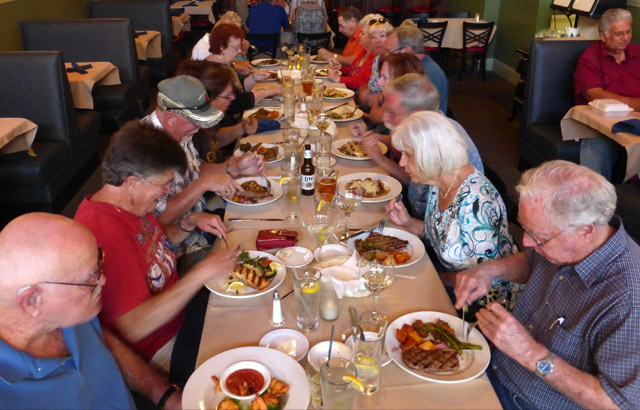
We all had excellent dinners! I understand that this restaurant is the only one in town with an honest
to goodness chef!
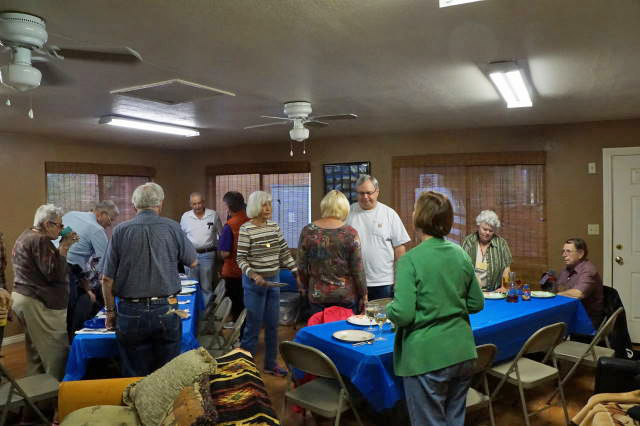
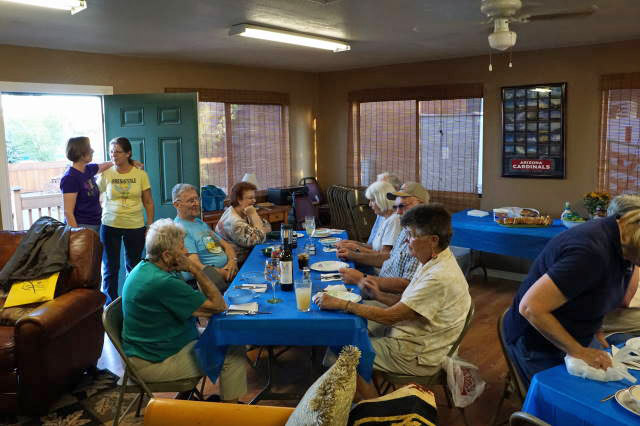
The clubhouse was well utilized for both our first night's heavy hors d'oeuvres and our final night host prepared dinner.
These pictures were taken by Marilyn, Norm, and Dick